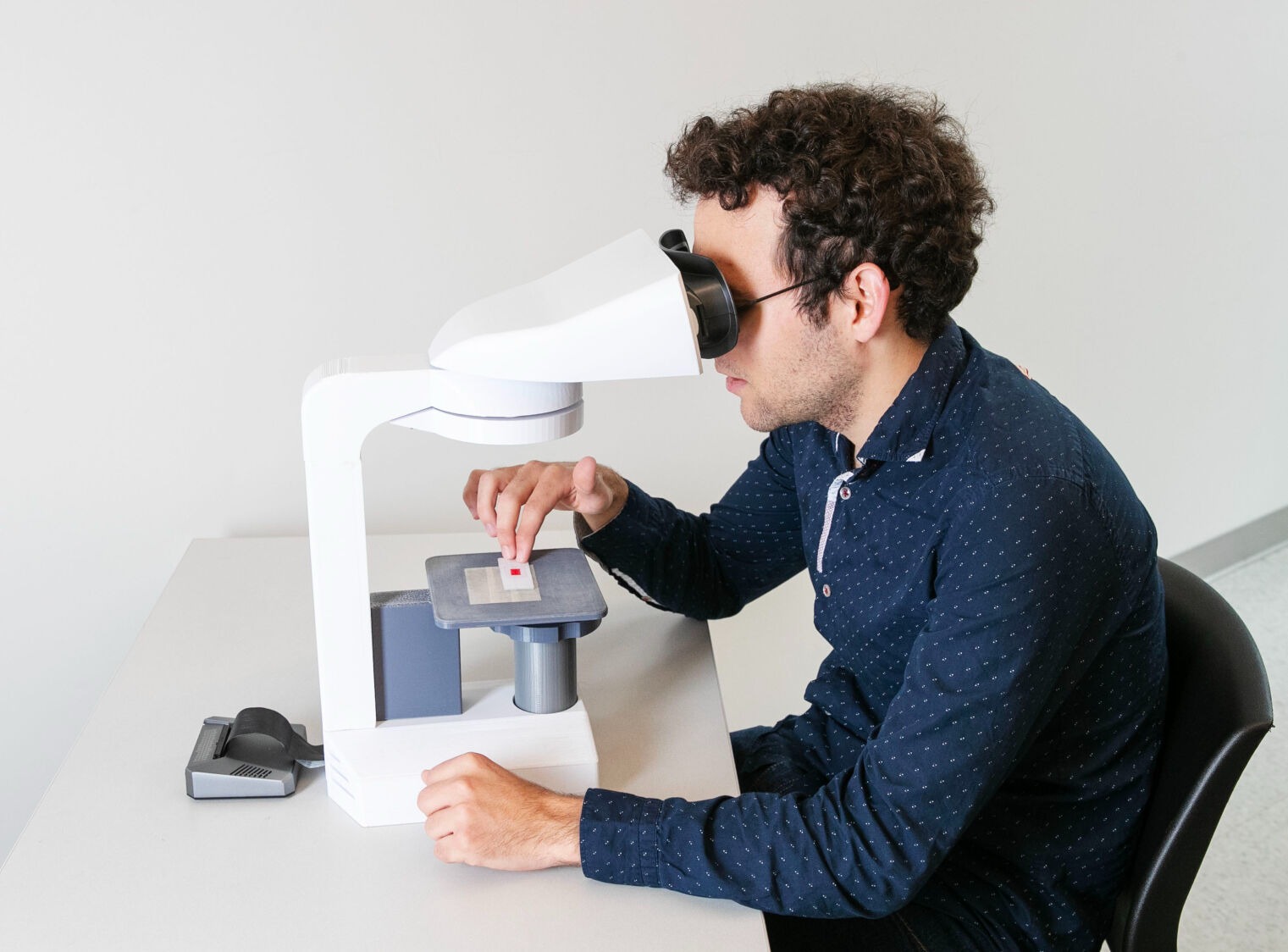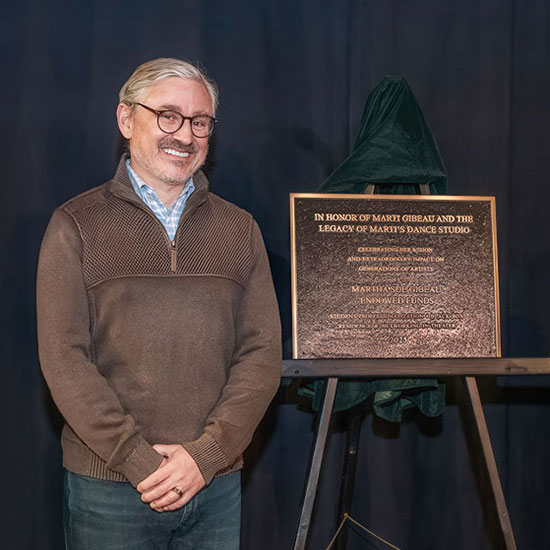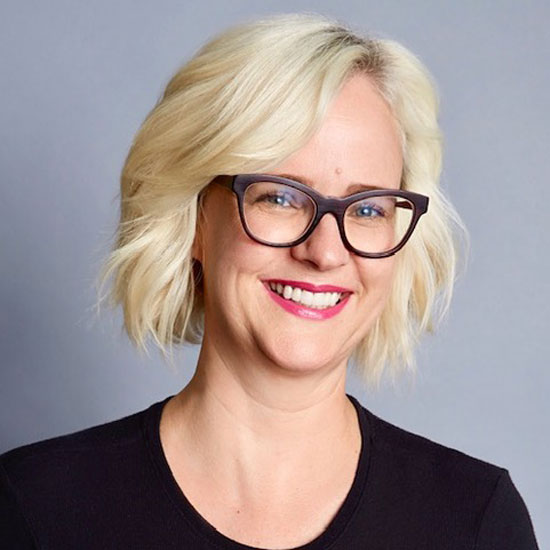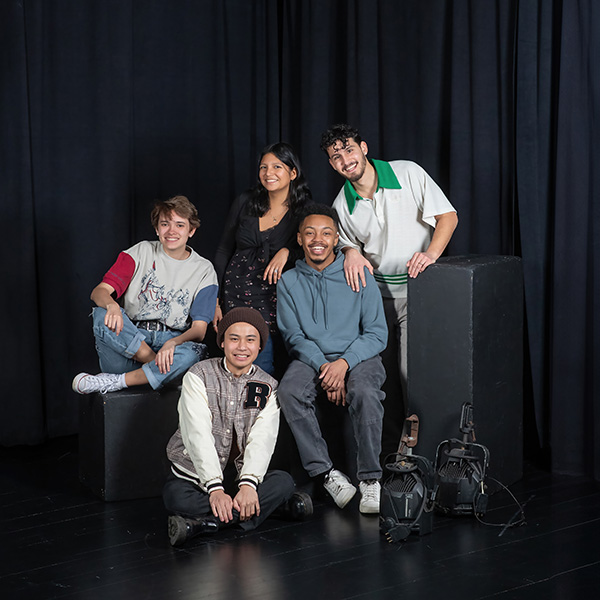An AI-driven microscope that could transform global healthcare
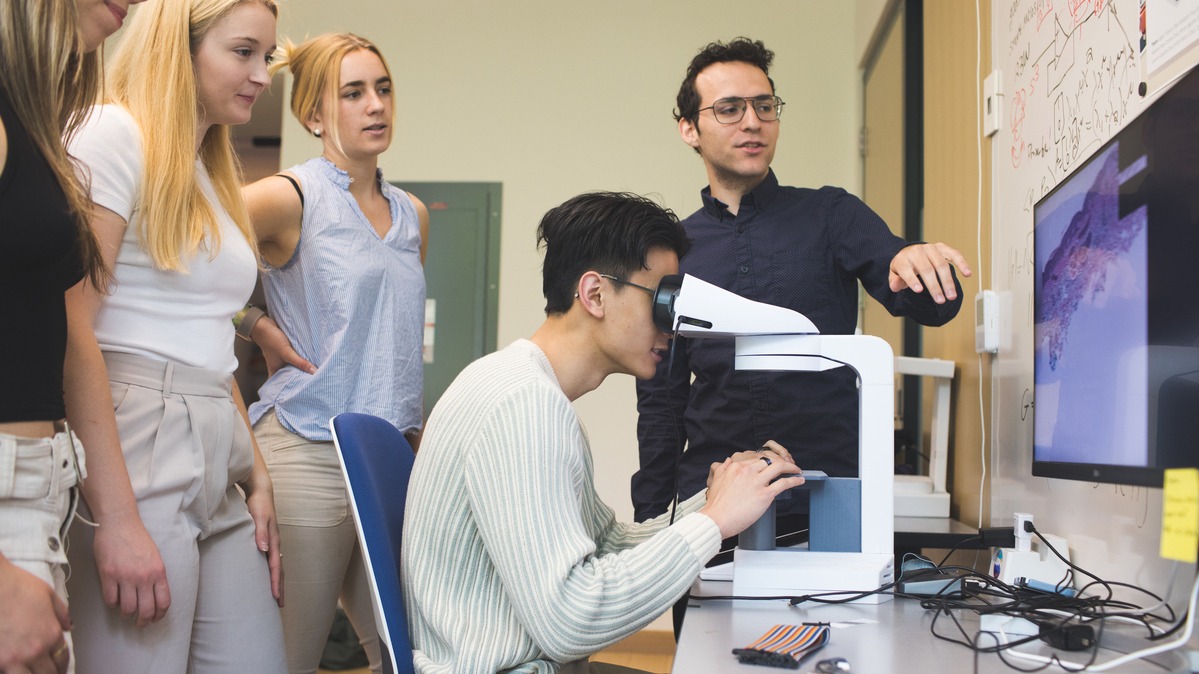
If your doctor has ever ordered a biopsy, you may know how long it can take to get a diagnosis. After a specimen is mailed to a lab for analysis, you can sometimes end up waiting weeks until the results come back.
Fortunately, Alex Carney ’22, who earned a degree in mathematics and physics from Skidmore College and a Bachelor of Engineering from Dartmouth College as part of a joint degree program, is working to speed up diagnoses.
The triple major is playing a pivotal role as chief technical engineer in the development of SmartScope, a patent-pending microscope that aims to fix a significant industry problem: Despite the availability of high-resolution images of tissue and the software to view those images, pathologists have been slow to switch from viewing samples on glass slides with a conventional microscope to viewing them digitally.
The innovation incorporates digital pathology software, including artificial intelligence (AI), and packages it into a microscope, marrying enhanced microscope design and functionality with the brains of a computer. In the near future, it will also provide a platform with AI image classification algorithms that can instantly simulate the results of multiple dermatological tests.
The project is the brainchild of Dartmouth Health dermatopathologist Dr. Aravindhan Sriharan. Carney got involved in fall 2022, when he helped build the device’s initial software. He has since transitioned to a leadership role, overseeing the project’s technological development, mentoring new developers, and establishing a backbone for its software that will allow it to continue to grow.
“No more shipping skin tissue across state lines (or even international borders). Now there can be quicker, more effective, and likely less expensive diagnoses for patients.”Alex Carney '22, chief technical engineer in the development of SmartScope
Even more importantly, the technology could revolutionize the way cancer and other diseases are diagnosed in clinical cases, while transforming healthcare in countries and regions where resources and expertise are more limited.
An animated presentation on how SmartScope could save lives and revolutionize dermatopathology across the globe.
Carney, who spent his first two and fourth years at Skidmore and his third and fifth years at Dartmouth, credits his “incredible” Skidmore faculty mentors for helping to build a strong academic foundation.
His experience is an example of the many opportunities in science, engineering, technology, and mathematics (STEM) at Skidmore, which range from unique collaborative research conducted with Skidmore faculty to experiences in the new, state-of-the-art Billie Tisch Center for Integrated Sciences.
And at any given time, at least 10 Skidmore students, like Carney, are enrolled in a cooperative 3/2 engineering program at Dartmouth or Rensselaer Polytechnic Institute.
“If I could start college over, I would take the 3-2 path — always with my senior year at Skidmore!” Carney said. “The 3-2 path gave me the opportunity to study at two colleges and get the best of both — rigorous interdisciplinary academics, an expanded alumni network, additional on-campus clubs and job opportunities, and new friends and experiences. Plus, you get to have two first-day-of-college experiences and two graduations.”
From musician to engineer
A classical pianist, Carney applied to Skidmore through the Early Decision application process. Initially, he had hoped to earn a Filene Music Scholarship and take advantage of the College’s conservatory-level music program in a liberal arts setting.
Although the Filene Scholarship did not pan out, he became an active member of Skidmore’s jazz band and choir. A fellow student eventually introduced him to the 3/2 engineering program.
He realized the Dartmouth program is “perfect for students like me who are interested in the sciences but aren't entirely sure what type of career to pursue.”
Meanwhile, his introduction to SmartScope came through membership in Dartmouth’s Digital Applied Learning and Innovation Lab (DALI) — a student organization that functions like a software consulting company.
It was in his third year of college — his first at Dartmouth — when Carney decided DALI was “too interesting an opportunity to pass up.” He spent the following summer honing his web development skills to enhance his DALI application.
Back at Skidmore for his senior year, he designed and implemented a web application for data storage and management to support his research projects. It streamlined the process of downloading files from Google Cloud and uploading them in the appropriate code without any need for a flash drive.
When he presented his data hub, which he coined the “Skidmore Extragalactic Catalog,” a few of his professors told him, “We want that, too. We’ve been struggling with the same data issue.”
Alex Carney '22 reflects on the development of his datahub project, the Skidmore Extragalactic Catalog, in a 2022 conversation with Ben Harwood, instructional technologist in the College’s Learning Experience Design and Digital Scholarship Support team.
Carney notes similarities between a software engineering course (Computer Science 326) that he took at Skidmore with DALI.
“The class is similar functionally to DALI because it involves student teams developing software for a simulated sponsor,” he said. “It was hands down one of the most fun and valuable Skidmore classes that I took, and it sealed the deal that I wanted to have the same experience at Dartmouth.”
Computer Science 326 was a small class, and Carney says there was “incredible camaraderie” among Skidmore students, who had breakfast together after class. Each week, they even ventured downtown for karaoke nights.
Carney also has fond memories of hosting house parties for his Quantum Mechanics class (Physics 348) and holding homework sessions with fellow students in Math and Computational Methods (Physics 331) as they all worked together to troubleshoot code that didn’t quite work as it should.
Beyond his own studies, Carney found “immense satisfaction” as a peer academic coach helping fellow students tackle physics and mathematics.
From idea to reality
Accepted to the DALI program for his final year at Dartmouth, Carney signed on as a member of a six-person student team to work with Dr. Sriharan, who came up with the idea of SmartScope.
“When the doctor pitched his idea, no one quite knew what he was talking about, but we accepted the challenge of the unknown and began playing around with creating a physical microscope with controls similar to a conventional one but accessible in a digital format,” Carney said. “We moved back and forth between makerspace and the software lab.”
Thanks to the team’s student designers, the microscope chassis was 3D-printed, assembled piece by piece, and integrated with a computer, camera, and internal wiring.
By the end of the fall term, the team had a rough working prototype; by the end of the spring, they had a refined design, and three working prototypes were ready for pathologists to assess their efficacy in clinical diagnoses.
Not only was the task accomplished, but there is now preliminary data showing SmartScope is 50% faster than those working with current industry-leading software.
Carney says the most challenging part of the project was the sheer volume of mechanical, electrical, and software engineering problems that had to be solved within each 10-week school term.
“Each individual device component could have warranted 10 weeks of attention on its own. Instead, we adopted the philosophy of finding a suitable solution for each problem and quickly moving onto the next one.”
So, what’s next?
Carney will continue to work on the development of SmartScope as its chief technical engineer.
And this fall, he started a doctoral program at Dartmouth's Thayer School of Engineering.
“Ultimately, I want to contribute to the next scientific revolution by doing research in quantum computing and simulation in an industry setting, while teaching and mentoring my peers and the next generation of scientists.”Alex Carney '22
Read more about Alex Carney ’22’s perspective on his experience and Skidmore’s 3-2 program with Dartmouth.
